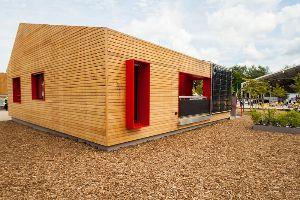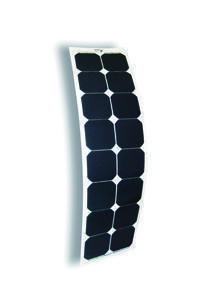Solar Decathlon 2014
Post from EditorialsItaly won with Team Dencity Rhome at the latest edition of Solar Decathlon Europe 2014, a true Olympiad of sustainable architecture.
Solar Decathlon Europe
It was held in Versailles, France edition of the Solar Decathlon Europe 2014 competition in the field of sustainable architecture, for which they have been universities to design, implement and manage sustainable homes. This competition was founded in 2002 in the United States, and is one of the most important companies and designers in the industry, a veritable Olympics of environmentally sustainable architecture.
The competition has the aim of spreading the culture of eco-sustainable, an increasingly evolving sector that aims to propose technical solutions to improve the livability of the environment in which we live, a sector strongly growing and getting better. It is in this context that the contest moves to promote the achievement of an energy-saving building by encouraging the use of solar technologies, only energy source permitted in this project context, and that has to be integrated architecture.
The competition was established in 2002 by the Department of Energy of the United States. For the year 2014 have been fixed a few essential points, for design purposes: in the period before the competition takes place the design of the prototypes, which must be completed and open to the public during the days of the event, and to be inhabited by the team that designed housing.
The individual units competed in ten races in the points, and were judged by an international jury according to different criteria: that of Urban Design, Transport and Accessibility, Sustainability of Energy Efficiency, Communication and Social Awareness of Innovation, of engineering and construction, energy balance, the operation of the home, of Comfort and Architecture.
There were so many competing projects from around the world, from Italy to Thailand, from Costa Rica to the United States of America, from Japan to Chile in this edition is that Italy has won the Team Rhome for Dencity, Roma Tre University, led by Chiara Tonelli, who became the pride of our country.
Project Team RhOME for denCity
The house project proposed by the team RhOME for denCity, at the Solar Decathlon Europe 2014 edition, has been realized thanks to the contribution of several companies, including Solbian Alternative Energy srl. The company's researchers have patented a special photovoltaic roofing made with 98 flexible panels SP50L of 1109x292X1, 5 mm, made with a weight that is seven times lower than that of a traditional panel made at equal power..jpg)
In fact, the panels weigh 0.8 kg and were mounted on a micropierced dark tissue. The same have been prepared to cover a wall and the roof and can be moved easily becoming a shading system, capable of creating shade of the loggia of the house. The photovoltaic sail, moreover, has been studied in such a way that the winds that are generated under it, refresh environments also managing to extract the hot air.
The installation is quick, the lightness of the brushes enables the pre-assembly on the floor, thanks to the presence of simple joints. The system thus realized, as required by the competition, makes the house autonomous from the point of view of energy. The model is made of prefabricated eco-friendly wood with a strong desire to improve the quality of indoor air, powered entirely by solar energy, as required by the competition represents a replicable model of settlement that aims to regenerate the town. The model was designed, however, specifically for urban areas of Rome, in particular a suburb of Rome, Tor Tax. Starting, however, from problems and local issues, wants to deal with a global issue, setting goals rather ambitious.
The model is made of prefabricated eco-friendly wood with a strong desire to improve the quality of indoor air, powered entirely by solar energy, as required by the competition represents a replicable model of settlement that aims to regenerate the town. The model was designed, however, specifically for urban areas of Rome, in particular a suburb of Rome, Tor Tax. Starting, however, from problems and local issues, wants to deal with a global issue, setting goals rather ambitious. The heating - cooling system is well balanced, and is able to adapt every day to different climatic conditions. All these features have convinced the jury, which, however, gave the French team to second place and third place to the Dutch team, who distance themselves from the first place for not a lot of votes.
The heating - cooling system is well balanced, and is able to adapt every day to different climatic conditions. All these features have convinced the jury, which, however, gave the French team to second place and third place to the Dutch team, who distance themselves from the first place for not a lot of votes.
Sponsors Team Rhome was the company Schneider Electric Italy, who provided advice and technical support for the implementation of key parts as well as the control solutions of photovoltaics and other accessories of the house.
The event took place on an area of 10 hectares, located in the park of the Chateau de Versailles. Contestants were 600, 200 university professors and great schools, 41 universities to achieve the 20 teams that have undergone 20 prototypes in real scale, 6 juries through 10 rigorous tests.
79586 REGISTERED USERS










